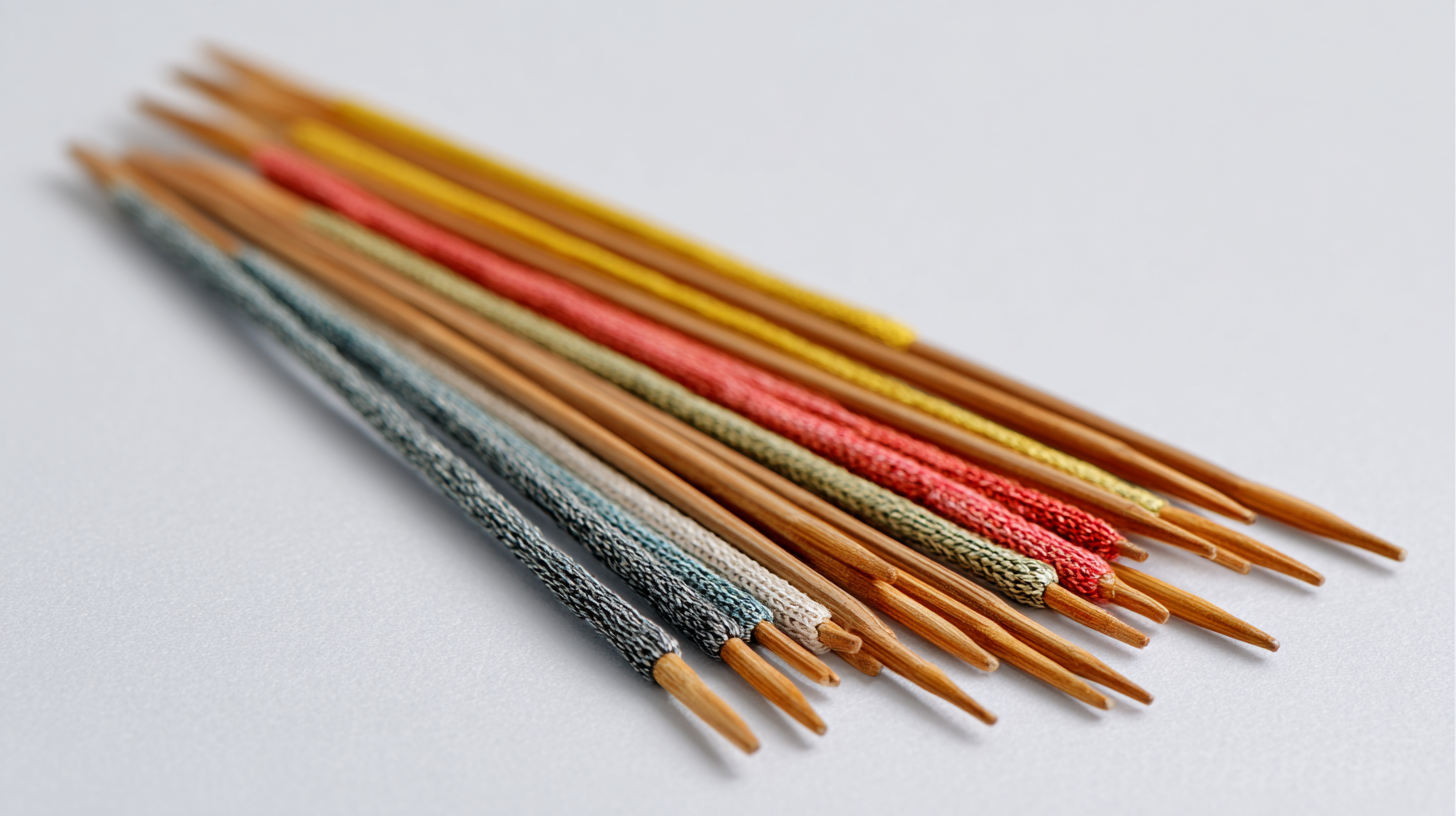You have successfully logged out.
How to Safely Choose Needles for Surgery: A Comprehensive Guide
Selecting the appropriate needles for surgery is a critical factor that can significantly impact surgical outcomes. According to the Global Surgical Needle Market Report, the surgical needle market is projected to reach approximately $6.80 billion by 2025, reflecting the increasing emphasis on advanced and specialized surgical instruments. Specifically, the selection of needles surgery plays a pivotal role in reducing the risk of complications such as infection and ensuring optimal healing. In fact, studies indicate that the correct needle choice can enhance suturing precision and minimize tissue trauma, leading to faster recovery times for patients. As healthcare professionals continue to prioritize patient safety and efficacy, a comprehensive understanding of the types and uses of surgical needles is essential. This guide aims to equip surgeons and healthcare providers with the necessary knowledge to make informed decisions about needle selection, ultimately contributing to improved surgical practices and patient care.

Understanding Different Types of Surgical Needles and Their Uses
Surgical needles play a crucial role in the medical field, as the right needle can significantly affect surgical outcomes. Understanding the different types of surgical needles and their specific uses is essential for practitioners. According to a report by the Global Surgical Needle Market, the demand for surgical needles is projected to reach USD 2.6 billion by 2027, highlighting the importance of selecting the appropriate needle for various procedures.
There are several types of surgical needles, each designed for specific tasks. For instance, taper point needles are commonly used for suturing delicate tissues, as their sharp points allow for easy penetration without causing significant damage. On the other hand, cutting needles, which feature sharp edges, are ideal for suturing tough tissues, such as skin or fascia. A study published in the Journal of Surgical Research notes that using the correct needle type can reduce tissue trauma and improve healing times, emphasizing the importance of proper selection.
In addition to needle type, factors such as size and needle curvature also play a vital role in their function. For example, smaller gauge needles are typically used for delicate procedures or pediatric surgeries, while heavier gauge needles are preferred for orthopedics or larger tissue repairs. Understanding these intricacies is essential for clinicians to enhance their surgical techniques and ensure patient safety.
How to Safely Choose Needles for Surgery: A Comprehensive Guide
| Needle Type | Description | Use Cases | Potential Risks |
|---|---|---|---|
| Conventional Needles | Straight or curved needles with a single sharp point. | General suturing of skin and soft tissues. | Injury to surrounding tissues if used incorrectly. |
| Cutting Needles | Needles with a cutting edge; ideal for tough tissues. | Suturing ligaments and fascia. | Higher risk of tearing surrounding tissues. |
| Taper Needles | Rounded needles with a tapered point. | Ideal for suturing delicate tissues. | May require precise handling to prevent damage. |
| Spatula Needles | Flat needles used for specific surgical techniques. | Used in ophthalmic surgeries. | Risk of improper placement leading to complications. |
| Disposable Needles | Single-use needles for safety and sterility. | General surgical procedures. | Environmental concerns regarding waste. |
Factors to Consider When Selecting Needles for Specific Procedures
When selecting needles for surgical procedures, several critical factors must be taken into account to ensure safety and efficacy. One primary consideration is the type of procedure being performed, as different surgeries require different needle designs and sizes. For instance, a study published in the Journal of Surgical Research highlights that suturing in delicate tissues, such as gastrointestinal and vascular surgeries, often benefits from finer needles to minimize tissue trauma and promote healing. Conversely, orthopedic surgeries may necessitate larger-gauge needles to accommodate thicker sutures and tougher tissue.

Another essential aspect to consider is the needle's material and coating. According to a report by the American Journal of Surgery, needles made from stainless steel are prevalent due to their strength and resistance to bending. However, the introduction of coated needles, such as those with silicone, can significantly enhance ease of passage through tissues, reducing the risk of friction-related injuries. Additionally, the selection should also factor in the patient's unique anatomical characteristics, as variations in tissue thickness and density can influence the effectiveness of the chosen needle. By understanding these factors, surgical teams can make informed decisions that enhance patient outcomes and minimize complications.
The Importance of Sterilization and Handling Practices for Surgical Needles
When it comes to surgical procedures, the selection and handling of needles are crucial components that directly affect patient safety and surgical outcomes. A key aspect of this process is the sterilization of surgical needles. According to research published in the *Journal of Surgical Research*, proper sterilization techniques can reduce infection rates by up to 60%. This is vital considering that surgical site infections (SSIs) occur in approximately 2-5% of all surgeries, resulting in prolonged hospital stays and increased healthcare costs.
In addition to sterilization, safe handling practices are essential for maintaining needle integrity and preventing contamination. The Centers for Disease Control and Prevention (CDC) guidelines recommend that all surgical needles be handled with care, using gloves and sterile instruments to avoid direct contact. Moreover, needle storage must be managed to protect them from environmental factors that can compromise sterility. A study by the *American Journal of Infection Control* indicated that improper handling and storage practices can increase the likelihood of needle-related complications. Adopting comprehensive sterilization and handling protocols is therefore imperative in minimizing risks and ensuring better patient outcomes during surgical procedures.
Needle Sterilization Practices
Guidelines for Maintaining and Storing Surgical Needles Safely
When it comes to surgical procedures, the safety and sterility of surgical needles are paramount. A significant aspect of this safety involves proper maintenance and storage techniques. According to a report from the World Health Organization (WHO), improper storage can lead to contamination and increased risk of infections, which may compromise patient outcomes. Surgeons must adhere to strict protocols: needles should be stored in a clean, dry environment away from direct sunlight and humidity, ideally in sealed, sterile packaging until use.
Additionally, maintaining the integrity of surgical needles is crucial. Regular audits and inventory checks should be conducted to ensure that needles are not past their expiration dates, as expired needles can become dull or contaminated. The Association for Professionals in Infection Control and Epidemiology (APIC) emphasizes that maintaining strict adherence to guidelines for sterilization and handling can reduce the rate of surgical site infections (SSIs) by up to 50%. Healthcare facilities are recommended to provide specific training for staff on the importance of proper storage and maintenance, ensuring that each member understands the critical role they play in patient safety.
Common Mistakes to Avoid When Choosing Surgical Needles for Surgery
When it comes to selecting surgical needles, several common mistakes can lead to suboptimal outcomes and increased complications. One of the most frequent errors is failing to match the needle type with the specific procedure. For instance, using a tapered needle for suturing dense tissues can result in improper closure and scarring. Understanding the various needle types, such as cutting versus non-cutting, is essential for achieving the desired surgical results.

Another mistake is neglecting to consider the gauge and length of the needle. Selecting a needle that is too thick or too short can hinder precise access to deep tissues or compromise the integrity of delicate structures. It’s crucial to assess the anatomy involved in each procedure carefully.
Tips: Always have a variety of needle sizes and types available for each surgery to ensure you can make the best choice as needed. Consultation with experienced surgeons about their preferences can also provide valuable insights and enhance your needle selection process. Remember, the right needle not only facilitates a smoother operation but also promotes better healing and fewer complications.
Related Posts
-

Understanding the Role of Needles in Surgery and Their Impact on Patient Outcomes
-

“Exploring Different Types of Surgical Suture Needles: A Comprehensive Guide”
-

Comprehensive Guide to Sourcing the Best Stainless Steel Suture Needles for Your Needs
-

Understanding the Importance of Suture Supplies in Modern Surgical Practices
-

Quality Suture Supplies from China Your Trustworthy Global Manufacturing Partner
-

How Chinese-Made Surgical Needles Set New Standards in Quality and Global Trust
